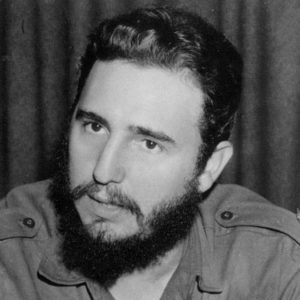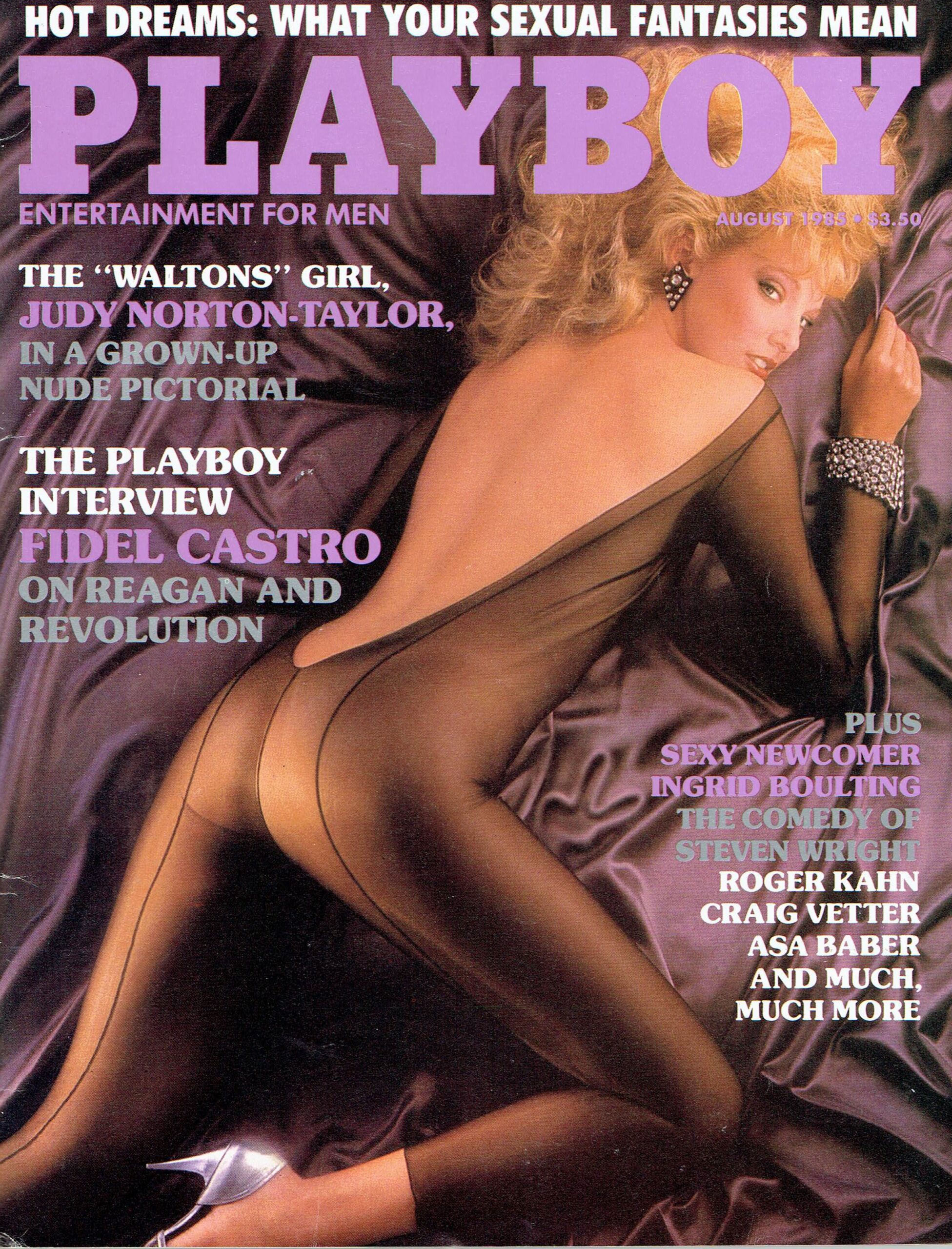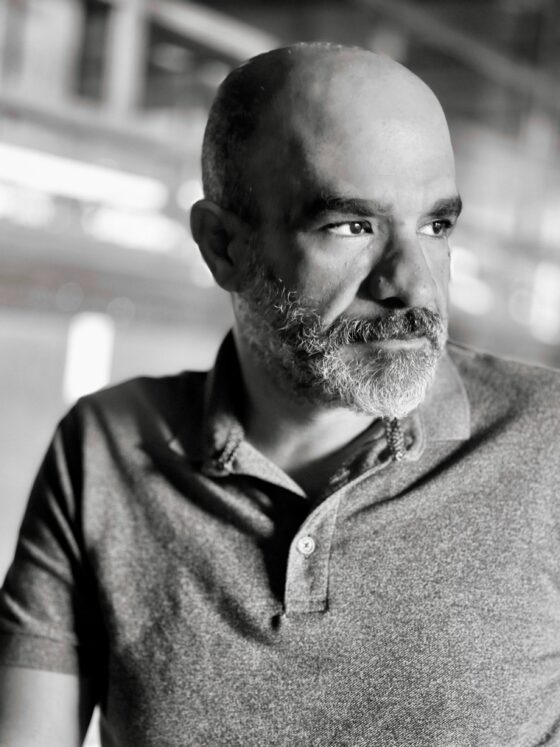
The twentieth century is fading, not only as a matter of historical time, but also because its icons in politics and culture are disappearing one by one. On September 27, the world awoke to news of the death of Hugh Hefner, one of the most controversial characters of the twentieth century. Hefner was the founder of Playboy, a men’s entertainment magazine that shaped American print culture during the Cold War.
It has also been a year since the death of Fidel Castro. When he died on November 25, 2016, at the age of ninety, a central piece of the last century’s revolutionary utopias died with him.
It’s no secret that the US news media was long-fascinated by Castro, even before he seized power in 1959. Herbert Matthews and Andrew St. George published reports on Castro starting in 1957 that contributed not only to his erotic image but also to a romantic vision of his revolution. But the comandante was just as fascinated by the journalists and their cameras. He became a celebrity and a media superstar—a “movie star” dictator, as journalist Ann Louise Bardach called him—who commandeered attention even outside Cuba. “It would be difficult to choose a better subject for a biography, or a Hollywood epic for that matter, than Fidel Castro,” independent journalist David Holahan wrote in 1986.
In contrast to the disdain he felt for the Cuban news media, Castro always enjoyed appearing in the US media. And he did not appear only in mainstream media like the New York Times; he was also in Playboy, the magazine that helped cement Castro’s image as a playboy comandante.
Fidel Castro and the Bunnies: The Playboy Interview
Castro turned up on the pages of Playboy several times, most notably in the interview section, alongside interviews with Jean Paul Sartre, The Beatles, Malcom X, Muhammad Ali, Vladimir Nabokov, Martin Luther King Jr., Orson Welles, and many others.
“Fidel spoke to Playboy for the same reason I spoke to the Playboy interview conductor: to sell what I wanted to sell: i.e., my book and me as its author,” said legendary journalist Gay Talese. “Giving interviews is all about free publicity… So Castro wanted to sell himself to a large audience of readers at a time when Playboy was selling, in the USA alone, about six million or more copies.”
Castro’s first Playboy interview appeared in the January 1967 edition. The interviewer was Lee Lockwood, a photojournalist who had met the dictator on the island and was about to publish a book titled Castro’s Cuba, Cuba’s Fidel.
The interview was published under the headline, “Fidel Castro: A Candid Conversation with the Bellicose Dictator of Communist Cuba.” It’s almost certain that Castro read the interview because he later sent a letter to Playboy publisher Hugh Hefner. Although the text remains a mystery, that letter, three photos of Castro, and the paperwork generated during the interview were part of Lot 191 sold at auction by Christie’s some years back for $8,963.
The interview was preceded by an introduction from Hefner, who wrote that the Cuban leader “may be the most hated dictator in the Western Hemisphere” but added that at home Castro was “an indispensable man, a ubiquitous despot who supplies the energy for nearly every phase of contemporary Cuban life.” For better or worse, Hefner added, wrote, “He is contemporary Cuba.”
Lockwood himself described the interview with the Cuban dictator as “an extraordinary experience” but added that unless interviewers stood their ground, an interview with Castro could become less of a conversation “and more like an extended monologue with occasional questions.” Most of Lockwood’s questions focused on Castro’s start as a communist, and whether US policies had helped to radicalize the Cuban leader.
They also talked about the 1962 Missile Crisis, which had been provoked by the presence of Soviet nuclear weapons on the island. Castro claimed that beside the US pledge not to attack Cuba, Washington and Moscow also reached agreements that were not made public. “I don’t think this is the occasion to speak about them,” he said. “One day, perhaps, it will be known that the United States made some other concessions in relation to the October crisis beside those that were made public.”
Lockwood also asked Castro about the number of political prisoners on the island. The dictator’s reply: “Although we usually do not give this kind of information, I am going to make an exception with you. I think there must be approximately 20,000.” An editor’s note attached to the interview said TIME magazine had reported on Oct. 8 1965 that Cuba held nearly 50,000 political prisoners. Castro played down this number, saying it included everyone sentenced by revolutionary tribunals— meaning not only those involved in “counterrevolutionary” activities but also those alleged to have committed a crime during the Fulgencio Batista dictatorship. “Unfortunately, we are going to have counterrevolutionary prisoners for many years to come,” he added. “In a revolutionary process, there are no neutrals: there are only partisans of the revolution or enemies of it.”
The journalist continued to push Castro, asking him about ideological indoctrination. Castro declared that he opposed censorship of books or movies. But whenever the comandante seemed to be settling into his comfort zone, the journalist pushed him harder, with inconvenient questions that trapped the dictator with his own rhetoric. “What you say is true… An enemy of socialism cannot write in our newspapers. But we don’t deny it, and we don’t go around proclaiming a hypothetical freedom of the press where it actually doesn’t exist, the way you people do. Naturally, you might tell me that in the United States it is possible to publish a book that is against the Government or to write articles critical of the establishment.”
At another point in the interview, Lockwood asked why the Cuban news media was so biased against the United States. Castro’s response: “I’m not going to tell you that we don’t do that. It’s true, everything that we say about the United States refers essentially to the worst aspects, and it is very rare that things in any way favorable to the United States will be published here. We simply have a similar attitude to the attitude of your country toward Cuba.” The only difference, he added, “is that we do not write falsehoods about the United States. I told you that we emphasize the worst things, that we omit things that could be viewed as positive, but we do not invent any lies.”
The journalist continued to ask tougher and tougher questions, and asked Castro if he considered himself a dictator. Lockwood brought up Castro’s almost messianic image, the cult of personality that was developing around him and noted the presence of “inspiring” portraits and posters of Castro in tens of thousands of Cuban homes and public buildings.
“I don’t know whether you are aware that one of the first laws passed by the revolutionary government, following a proposal of mine, was an edict against erecting statues to any living leader or putting its photographs in government offices,” Castro answered. “Now you will see in many homes and schools and public places, a small photograph in a little frame on the bookshelf or a corner of the desk. But where do most of these photographs come from? From magazines, from newspapers, from posters connected with some public meetings… And permit me to say, finally, that I don’t experience any personal satisfaction whatsoever when I read some of the flattering qualities that are attributed to me in the press, I have never spent a single second of pleasure over such things. I can tell you in all sincerity that they have no importance for me. And I think this is a positive thing. Because, as a general rule, power corrupts men. It makes them egotistical; it makes them selfish. Fortunately, this has never happened to me. and I don’t think it will.”
It’s not known whether Hefner or Lockwood sent copies of the magazine to Castro. If they did, they must have been sent by Cuban diplomatic pouch because at the time publications like Playboy were considered to be pornographic or “diversionist” from Cuba’s ideological point of view, and were not much liked by the Cuban regime.
Hefner remained interested in Castro for many years. The Lockwood interview appeared in the book Playbook Interview, published by Playboy Press in 1981. Three years later, People put Castro on its “best dressed” list, along with Princess Diana and rock star David Bowie.“People‘s fashion arbiters seem to be rewarding persistence rather than panache,” columnist Rob Morse wrote in the Chicago Tribune. “They disregarded Libyan dictator Moammar Khadafy’s revival of the comic-opera epaulet. They Ignored Yasser Arafat’s contributions to men’s haberdashery and his daring introduction of the go-everywhere pistol.”
In fact, throughout his life as Cuba’s dictator, and with few exceptions, Castro wore only the olive green military uniform that seduced many leftist youths, who saw the Cuban dictator as a symbol of constant rebellion against the US empire. George F. Will wrote in the Los Angeles Times in 1977 that Castro “is no less a dictator than was Trujillo. But Castro always has understood that Western society contains many leftists whose hatred of dictatorship is less constant than their hunger for political heroes.” He added that although most people no longer favored dictators, Castro knew how to manage the symbols of heroism. The olive green uniform, he added, was like the garb of radical students in expensive schools, who talked about their love for the masses but had no intention to share their destiny.
After People listed him among the “best dressed,” it was not surprising that Hefner again put Castro on the pages of Playboy. In August of 1985, Playboy published another interview with Castro, this time by Rep. Mervyn M. Dymally D-CA and his foreign affairs advisor, Jeffrey M. Elliot.
The introduction mentioned the 1967 interview and noted that Playboy had been one of the few publications to talk to Castro in two decades. “Times change, and Castro clearly believes that the time has come to launch a new dialog with the American public,” it noted.
In response to the interview, Castro pulled a cigar box from his desk and wrote a note to Playboy’s executive editor. “To Barry Golson with thanks in advance for the publication of the interview. I declare amnesty for Dymally and Elliot after the pressures, tortures, and abuses they have submitted me to these days. I wish you success to all of you—and for myself, a little peace.”
Fidel Castro, Latin Lover
Fidel Castro’s appearances on the pages of Playboy, the most widely read men’s magazine in the United States in the 1960s and 1970s, also contributed to the erotization of the figure of the bearded comandante as well as Cuba and Cubans. These erotic and sexual qualities were also attached to the revolution. Even the wife of Canadian Prime Minister Pierre Trudeau joined the process when she called Castro “the sexiest man I’ve ever met” and claimed that he had flirted with her shamelessly even in front of her husband. Castro was portrayed as a virile Latin lover, with a charismatic personality and an exotic masculinity.
The perception extended to the United States, especially among the poor and marginalized sectors. Some leftist groups had been fascinated by Castro since his first visit to the United States in 1959. Abbie Hoffman, founder of the Youth International Party—the Yippies—was one of the many who succumbed to the enchantments of the Cuban dictator. In his autobiography, Soon to be a Major Motion Picture, he wrote that Castro was one of the best orators he had ever heard. After attending a Castro conference at Harvard, Hoffman described him as a “real hero,” “young and flashing in his green army fatigues, tall and bearded.” At thirty, he added, Castro could have been one of his younger professors, “exhorting us to answer the call of the oppressed.”
The fascination with Fidel Castro and solidarity with the Cuban revolution in the United States was not initially based on leftist organizations but rather on a “romantic ethos” among rebellious youths, the “bad boys” of pop culture who idolized James Dean and Elvis Presley. Van Gosse, author of the 1993 book Where the Boys Are: Cuba, Cold War America and the Making of a New Left, wrote that Castro’s virility had been attached to those idols. Yankee-Fidelismo, he added, “signaled a reassertion of creative and heroic masculinity in the widest sense.” He added that American youths had transferred to the Cuban barbudos all the mystique of the imagined world in movies like Rebel Without a Cause.
“Who has a bigger image in Cuba than Che?,” Talese asks in reference to guerrilla leader Ernesto “Che” Guevara. “Whose face is more familiar on the billboards and walls and on the t-shirts of people than Che? Castro probably learned a bit about “image building” from his friend Che.”
Castroland: Revolution as Theme Park
Hefner and Castro headed their own revolutions. With Playboy, Hefner led the sexual revolution of the Post-War era, while Castro led the Cuban revolution. Both, in their own way, wanted to change the lives of millions of people and create “a new man.” Hefner wanted to create the middle-class bachelor. Castro’s political and personal goal, on the other hand, was to create a militant communist.
But their visions did overlap. In front of the Cubans and the world, the comandante also presented himself as a desirable bachelor, in his olive-green fatigues, uncompromising, and on the loose. There are reports that he married Dalia Soto del Valle in 1980, but she was never a first lady. Fidel Castro never presented her in public as his wife and their marriage was a well-kept secret for decades. It was Vilma Espín, the wife of her brother Raúl and head of a women’s organization, who filled the role of the Cuban first lady for many years, replacing Celia Sánchez, the late close friend and confidant of Castro, as the feminine face of the revolution.
Hefner and Castro also shared a certain parallel. Both created theme parks. Journalist Anthony Lukas wrote that Hefner and Walt Disney were soulmates because they created their own worlds around popular fantasies. Lukas saw that Hefner was trying to sell popular fantasies as a way of life—just like Disney, who aside from creating Mickey Mouse and Pluto also created “controlled settings” where average Americans could enjoy a world of fantasy.
And just like Disney, Castro built his own kind of theme park in Cuba. His using the ideals of socialism, Castro made his whole country a theme park—a “Castroland” that revolved around a single concept: revolution. Castro’s world, no less utopian or fantastical than Hefner’s or Disney’s, is also a “controlled setting” that even today generates the admiration of sectors that Cuban writer Reinaldo Arenas once called “the festive left.” Gisela Kozak Rovero called it “the Disney left” to describe the propensity of a certain part of the left to view Latin America as an amusement park.
Castroland has been a paradise for the “Disney Left,” an ideological resort with museums and murals dedicated to the figure of the maximum leader. A theme park that has no McDonald’s or Burger Kings, only old cars and tumbledown buildings. Castroland is based on the export of ideological myths and fantasies, but it has also worked as a business that generates big profits from the sale of Che Guevara t-shirts and other revolutionary souvenirs.
Castroland has been a favorite place to visit for many politicians, writers, artists and celebrities who saw Castro himself as the top attraction. The comandante produced ideological fantasies on a mass scale within the context of the Cold War which led to an exotic, sexy, and happy vision of Cuba.
***
Image credits: Feature photograph via Creative Commons. Cover of Playboy announcing interview with Fidel Castro, August 1985, © Playboy Enterprises. Cover of Siempre!, a Mexican magazine, with drawing by Jorge Carreño Alvarado, July 24, 1962, provided by author from personal archive.






